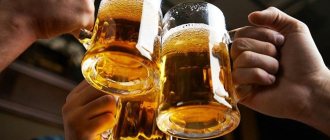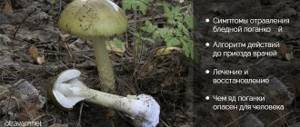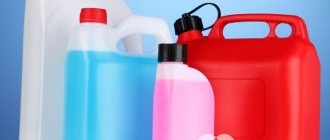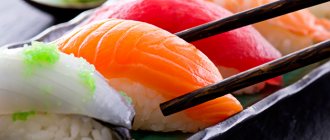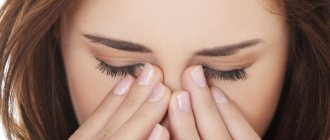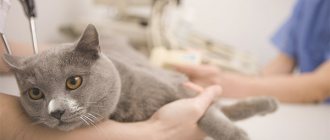The tissues and organs of the human body are built with proteins that need to be replenished periodically. Proteins enter the body with food. People involved in sports eat a large amount of such food. All types of meat, nuts, legumes, dairy products and seafood are rich in protein. Recently, people have become completely carried away by protein nutrition - they follow a special diet. The craze involves advertising a beautiful, slender body with a muscular build. Exceeding the concentration of protein can provoke protein poisoning, which can have serious consequences for human health. Sometimes the cause of an overdose is a disruption of the digestive system.
Causes of poisoning
There are only three significant reasons due to which poisoning occurs.
Violation of sanitation standards can provoke intoxication. Fast food establishments on the sea coasts, as well as single-season sushi bars, neglect safety rules. Expired seafood and low-quality ingredients may be used here.
Oyster poisoning occurs due to poor-quality raw materials and contamination with various chemicals. The causes of intoxication include bacteria, viruses, algae, and flagellated microorganisms that are found in oysters. The main causes of oyster poisoning one day after eating:
- Dead oysters getting into a culinary dish.
- Poor quality oyster harvesting. Presence of dinoflagellates and red algae that produce toxins.
- Infections: salmonellosis, E. coli, botulism (canned food), pseudotuberculosis. Infection of oysters occurs during harvesting, storage, and delivery.
- Contamination of the product with chemicals - industrial waste (heavy metals, dioxin).
- Viral infections of oysters – norovirus.
- Allergic reaction.
- Infection with parasites - protozoa, helminths.
Catching, harvesting and transporting oysters, as well as cooking are important steps. If sanitary rules are not followed, dead oysters end up in the batch. Such products develop microorganisms that produce toxins that can cause symptoms of poisoning. Dead oysters may contain E. coli, Salmonella, Shigella, and Yersinia pseudotuberculosis.
Seafood - what is it?
Seafood is a term that unites all marine and ocean inhabitants that do not fall into the category of fish (molluscs, cephalopods, crustaceans, echinoderms and algae). Such products are very popular not only because of their good taste, but also because of their chemical composition. Seafood contains not only many vitamins, micro- and macroelements that are beneficial to the body, but also protein in large quantities, which makes them filling.
Seafood is used both for preparing various dishes and individually.
Varieties of seafood
There are quite a few types of seafood, but there are several that most often provoke poisoning.
- Mussels and oysters. Both products are rich in nutrients, vitamins and minerals. In the ocean, they filter water, which often contains the remains of poisonous plants. There is no danger for mussels or oysters, but a person will be poisoned by such food.
- Shrimps. A popular dish, unfortunately, is often a carrier of harmful bacteria or is stored incorrectly. However, shrimp are grown artificially; various substances are often added to the water to promote the rapid growth and development of seafood.
- Squid. Contains many useful elements and is a nutritious dish. Helps restore the immune system, promotes better functioning of the cardiac system. You can get poisoned if squid are caught in environmentally polluted waters. These inhabitants can cause severe mercury poisoning.
- Octopus. The taste and beneficial properties are similar to squid, but have a specific appearance. Poisoning is caused by foods that are improperly prepared.
- Crabs and lobsters. Also very useful when used correctly. However, they can cause intoxication in humans in the presence of E. coli or high levels of methylmercury.
The most popular dishes are served in many restaurants. However, it is recommended to remember moderation and not overuse seafood.
How much is needed
To date, the upper limit for the consumption of organic compounds has not yet been established. It is believed that symptoms of protein poisoning appear when forty-five percent of calories come from this substance.
First, let's figure out why we need it. Proteins are a kind of building material. They are needed for cell growth and repair.
For adults who lead a measured lifestyle, it is recommended that zero point seventy-five hundredths of a compound per kilogram of weight be taken per day. If you multiply, the approximate figures are as follows - fifty-five grams for men and forty-five for women.
Protein food is broken down into amino acids in the stomach. The small intestine absorbs it. The liver then keeps only those that it needs. The rest are excreted in the urine.
Symptoms
Symptoms of seafood poisoning are similar to those of any food overdose. What is typical in this case, how long does it take for intoxication to appear?
Eating low-quality or improperly prepared foods that contain a lot of protein can lead to protein poisoning.
Symptoms of intoxication from seafood eaten occur due to the lack of carbohydrates and abundant protein (muscle meat) in the human diet. It can be triggered by its excess, poor nutrition, body characteristics, doping abuse, and overeating.
Seafood
Shrimp, oysters, and mussels can be grown artificially. This method of breeding seafood delicacies uses growth stimulants and other chemicals that have a negative effect on the human body.
The risk group includes poisoning by mussels and crayfish. Manifestation of symptoms:
- pain in the stomach; feeling of nausea;
- bouts of vomiting;
- diarrhea;
- feeling of general weakness;
- migraine;
- dizziness.
Crab sticks
They do not contain crab meat, but are made from fish with the addition of taste stimulants and flavorings. Intoxication is similar in severity to the condition of protein poisoning. Additional symptoms:
- cardiopalmus;
- increase in body temperature.
Poisoning with shrimp or mussels is more common than with crabs, this is due to their general availability and popularity.
Protein poisoning
- bloating;
- the appearance of sharp pain in the abdomen, stomach;
- nausea, vomiting;
- diarrhea;
- increased body temperature;
- dizziness, general deterioration of health;
- loose stools;
- smell of acetone from the mouth;
- change in urine color to darker.
Symptoms appear approximately 1-2 hours after consumption.
Mussels are mollusks that make up the contents of bivalve shells. In the world of food technology, mussels are representatives of the seafood group, and are very popular among gourmets.
Mussel meat has many benefits and, as a nutritional component, is of great benefit to the human body. It contains a considerable amount of phosphatides, polyunsaturated fatty acids and other trace elements.
The value of mussels is really high. But if the rules of storage, transportation and preparation technology are not followed, any seafood, including mussels, becomes quite dangerous. Often mussels are the cause of food intoxication.
Causes of mussel poisoning
In the article we will take a detailed look at mussel poisoning, talk about its symptoms and treatment.
Mussels are mollusks framed in bivalve shells. Their meat is extremely healthy because it contains phosphatides, trace elements, and polyunsaturated fatty acids. But these mollusks are known not only for their value. They often cause serious food poisoning.
Seafood dishes are considered one of the most exquisite delicacies. Expensive? In most cases, yes. Tasty? Let's just say, it's not an acquired taste. Nourishing? Very. Healthy? Undoubtedly. Seafood is available for sale in almost all supermarkets, frozen or marinated.
You can buy such semi-finished products and prepare a dish from them to suit your taste. Or you can visit some fashionable restaurant and treat yourself to seafood dishes there.
But in neither case are you 100% insured against intoxication. After all, even the most expensive establishment cannot guarantee the complete safety of seafood dishes, which also include mussels.
Why is there such a risk?
Since seafood is consumed by gourmets around the world, marine life is not only harvested from its natural habitat. There are special farms where mussels, oysters, squid, octopus, etc. are bred.
Especially a lot of farmed seafood is exported from China and Vietnam. In these two countries, as is known, there is an uncontrolled and active use of growth stimulants, various antibiotics and dyes, as well as hormonal agents, which cannot but have an extremely negative impact on the health of people who often eat such seafood.
In general, the probability of intoxication of the body due to raw mussels is 50/50. There is even a special name in medicine for such intoxication. Mussel poisoning is called mytilism. Microorganisms called dinoflagellates are what many sea inhabitants commonly eat. Dinoflagellates become toxic during their breeding season.
Having fed on such plankton, the mussels produce a paralytic toxic substance, saxytocin, which causes serious poisoning in humans, manifested by symptoms such as headaches, decreased sensitivity in the face, neck, tingling of the lips, and in more serious cases, respiratory failure and muscle paralysis, even lethal outcome.
What symptoms accompany mussel poisoning? Causes of poisoning, first aid, possible consequences for the body. How to avoid intestinal infection? Precautionary measures.
Mussels - dietary seafood
Mussels are a dietary product rich in microelements. It is impossible to find a fresh product on sale in our country.
It comes to the retail chain frozen, which makes it difficult to determine freshness. The pursuit of delicacies can lead to undesirable consequences.
Mussel poisoning is dangerous to human life and health. How to avoid seafood poisoning? How to properly provide first aid in case of poisoning?
Causes of poisoning
Mussel meat is rich in phosphatides - substances that improve liver function and Omega-3-polyunsaturated fatty acids - this is a storehouse of beneficial microorganisms for humans. Also, mussel meat contains iron, vitamin A, potassium, and calcium. But is this product really useful?
The fact is that the mussel feeds on phytoplankton - microorganisms living in water. Mussels suck up water and pump it back out. The gills of the mollusk are covered with a sticky substance on which food settles.
Mussels pump up to 40 liters of water per day, being an ocean purifier. These microorganisms can be toxic.
Having fed enough of the poisoned phytoplankton, the mussel begins to produce saxitoxin, which causes acute poisoning. Toxic food has no effect on the mussel, but if it gets to a person for dinner, it will lead to terrible poisoning.
However, there are many more reasons for poisoning:
- Expired food is the most popular type of poisoning. Spoiled seafood causes an acute attack of intestinal infection. Determining the quality of a frozen product when choosing in a retail chain is not easy.
- If the mussel was a carrier of the salmonellosis bacillus, then the person risks ending up in a hospital bed for a long time. The bacterium dies with careful heat treatment. However, lovers of sushi and raw seafood are at risk.
- Excess protein. The protein contained in mussel meat is a very useful building material for body cells. But everything is healthy in moderation; excess protein causes heaviness in the stomach and leads to stagnation, and then to decay and general intoxication of the body.
- Allergy. Itching and redness of the skin may indicate that an allergic reaction has begun.
Seafood in Chinese restaurants is often served with a lot of sauce. An allergy to one of the ingredients can cause a reaction similar in symptoms to poisoning.
Mussels are rich in microelements
Mussels are rich in microelements
Regardless of the type of marine life consumed as food, the signs of intoxication will be similar:
- dizziness, nausea and vomiting, starting 30-40 minutes after eating;
- sharp pain in the abdomen, bloating and diarrhea - opens after an hour and a half;
- increased body temperature: this is how the body reacts to severe food poisoning.
If a person had an allergy to protein, then the main symptom of protein poisoning will be the smell of acetone from the breath, caused by a metabolic disorder. In a serious condition, a person’s urine color may change – it becomes darker. No appetite.
Manifestations of oyster poisoning include symptoms from the gastrointestinal tract and central nervous system. The most common ones are:
- Nausea and vomiting.
- Headache and muscle pain are manifestations of intoxication.
- Impaired sensitivity and paralysis of the limbs and eyes - in case of poisoning by algae or dinoflagellates in oysters.
- Damage to the muscles of the pharynx, inability to eat, hoarseness of voice - botulism.
- Diarrhea, bloating, pain - with norovirus infection, as well as infection with marine vibrios.
- Tachycardia or bradycardia, arrhythmia.
- Loss of consciousness, up to coma.
- Quincke's edema, rash or anaphylactic shock due to an allergic reaction to seafood.
- Dilation or constriction of the pupils, changes in reaction to light, lacrimation, increased salivation.
Vomiting and diarrhea due to intestinal infections, such as pseudotuberculosis, salmonellosis and coli infections, lead to dehydration and cramps due to loss of macroelements. Facial features become haggard. The activity of the heart is impaired due to hypokalemia and a decrease in circulating blood volume. The condition threatens death.
What are proteins needed for?
Protein, or protein, is one of the main building materials for the cells of all tissues of the body. Especially a lot of protein is required for muscle development. Protein molecules contain more than 20 amino acids, many of which are not produced in the body.
A person receives most of the proteins daily from food, from the most common products: meat or fish dishes, milk, eggs. Without this valuable component, the most important reactions are impossible:
- formation of DNA and RNA molecules;
- renewal of bone and muscle tissue;
- maintaining hormone levels;
- releasing energy for movement.
A person with an average body weight should eat no more than 45 g (for women) and 55 g (for men) of pure protein per day. This is enough for stable functioning of the body, good health and healthy skin color. With excessive consumption of foods rich in protein, there is an increased load on the digestive organs and protein poisoning develops. Therefore, doctors remind people of the need to maintain a balance of nutrients and combine proteins with carbohydrates and fats in the diet.
Treatment methods for intoxication
Regardless of what caused the poisoning, it is necessary to call a team of doctors. While waiting for their arrival, the victim is provided with possible first aid aimed at alleviating the condition of the body. What to do at home to make the patient feel better?
Therapy must begin by identifying the causes. If this is due to the consumption of low-quality shellfish or their overeating, treatment can be carried out as follows:
- rinse the stomach with plenty of water, artificially induce vomiting (if there is no vomiting), give an enema or take a laxative (if there is no diarrhea);
- eat activated carbon to reduce the degree of intoxication;
- drink as much boiled water as possible until complete recovery;
- limit physical activity;
- Follow a low protein diet for 7 days.
Bodybuilders may experience protein poisoning when consuming sports nutrition (protein). In case of overdose, you must:
- Do not add it to food for at least a week.
- Drink plenty of fluids - at least 4 liters per day for 1 day;
- Stop training for a few days.
Symptoms and treatment are always interrelated, so it is necessary to treat intoxication based on the condition of the poisoned person. To remove toxins from the body, rinsing with a probe is carried out, droppers with glucose are prescribed, and antibiotics are administered in the presence of a bacterial infection. If botulism is suspected, anti-botulinum serum is administered.
In case of severe poisoning, the patient is kept in the hospital until his condition stabilizes. If the problem is caused by an excess of protein, drugs are prescribed to improve fermentation. At the same time, the stomach is unloaded; for this it is necessary to adhere to a light diet with a minimum protein content. Further treatment of poisoning involves taking hepatoprotectors as needed and vitamin therapy.
If the symptoms described above appear, it is necessary to seek medical help from an infectious disease specialist or toxicologist as soon as possible. For gastrointestinal symptoms such as vomiting, diarrhea, it is necessary to rinse the stomach. To eliminate nausea and vomiting after gastric lavage, use Cerucal in injections or Motilak sublingually. Sorbents will help get rid of toxins (see Absorbents for poisoning).
To restore the volume of circulating blood and cardiac activity, crystalloid solutions are administered. This is relevant both for bacterial infections and for norovirus invasion.
After testing stool and vomit for infections, antibacterial drugs are prescribed. To restore nervous activity, drugs that normalize acetylcholine metabolism are used.
Diet during the recovery period
On the first day of poisoning, a person should not be offered any food at all. The gastric mucosa will have time to recover a little within a day. After a day, you can gradually introduce low-fat, nutritious foods that are easy to digest into your diet. The sequence of product introduction is as follows:
- liquid viscous porridges without adding butter;
- second broths from chicken or veal;
- baked apples and ripe bananas;
- biscuits or savory crackers;
- decoctions of dried fruits or rose hips.
On the third day, 1% milk and bifidokefir are added to the diet. After another day, you can include chopped meat in the menu.
First aid measures
It is necessary to see a specialist to avoid complications. Intoxication can occur anywhere and at any time. Correctly provided assistance to the sick person reduces the risk of complications and significantly improves the condition of the poisoned person.
After consuming expired animal products, urgent cleansing of the body is required. To do this, perform a gastric lavage and a cleansing enema if there is no diarrhea.
In all cases of poisoning, the stomach is washed with plain water or a weak saline solution. You can dilute a little potassium permanganate in a large amount of water until it turns pale pink.
Drink at least one and a half liters of liquid and then induce vomiting.
First aid for a victim of seafood poisoning includes:
- taking sorbents - any drugs with a cleansing effect will help - activated carbon, Enterosgel, Smecta, Polysorb;
- rehydration therapy - to replenish the water and electrolyte balance, give a homemade glucose-saline solution or the pharmaceutical drug "Regidron";
- symptomatic therapy - when the temperature rises above 38ᵒC, give Paracetamol, with uncontrolled vomiting drink Cerucal, in case of spasm and pain, No-Spa will help.
If children or a pregnant woman are poisoned by exotic products, you should consult a doctor. Quick medical attention is required if traces of blood appear in the vomit and feces, with pre-fainting conditions and tachycardia.
Causes of poisoning
Poisoning from oysters or any other seafood is more dangerous than food poisoning, and therefore it is recommended to consult a doctor after providing first aid. The following actions will help relieve pain and slightly improve the patient’s condition:
- it is necessary to rinse the stomach. To do this, give the victim a drink of up to one and a half liters of water or a weak solution of permanganate. It is also necessary to provoke a gag reflex. In case of severe poisoning, it is recommended to repeat the procedure a couple more times.
- after washing, taking the sorbent will be effective. The most commonly known remedy is activated carbon.
- a large amount of fluid that will help avoid dehydration.
After completing all procedures, it is recommended to give the patient a little rest and periodically ventilate the room.
In case of seafood poisoning, it is recommended to call a doctor, because the exact cause of intoxication is unknown. If it is a bacteria or virus, then home care may not be enough.
Self-treatment with home remedies
- Ginger juice and honey. It is necessary to mix a few drops of ginger juice and honey in a 1:1 ratio and give it to the patient to drink. The product will help relieve abdominal pain and relieve inflammation. By the way, if necessary, ginger can be replaced with basil.
- Boiled water diluted with lemon juice. It is used immediately after poisoning and helps in removing toxins.
- Dill water or tincture of caraway seeds. Helps with bloating, large gas formation, and also relieves cramps. Dill and caraway seeds are bought at the pharmacy and brewed according to the instructions.
Remember also that you should not use any medications without a doctor’s permission, as this can only harm your health!
Proteins
In pursuit of accelerated muscle growth, many inexperienced (or not thinking about the consequences) athletes begin to swallow proteins and nutritional supplements immensely. The result is an excessive (and often off-scale) amount of protein in the body and, as a result, poisoning.
In order for proteins to help build muscles correctly, there are special developments and instructions. Each athlete is usually introduced to them by a coach or sports doctor.
Complications and consequences
In the absence of timely medical care, the condition of the poisoned person can deteriorate sharply. If poisoning occurs due to infection with botulinum toxin, then coma with subsequent death cannot be ruled out.
Food poisoning causes diseases such as:
- acute and chronic pancreatitis;
- liver inflammation;
- renal failure;
- gallbladder pathology.
Food poisoning from seafood can lead to serious consequences if treatment is not carried out in a timely manner.
It is important to remember that if, when providing first aid, the patient’s condition does not improve (vomiting and diarrhea continues for more than 1 day), you must immediately consult a doctor.
Intoxication leads to the development of diseases such as acute pancreatitis, nephritis, inflammatory processes in the liver, gallbladder dysfunction, and bile stagnation. Due to dyspeptic disorders, severe dehydration, exhaustion, and electrolyte imbalance may occur.
Causes of poisoning
Prevention methods
Self-medication, incorrectly selected methods of therapy for intoxication, advanced stage, non-compliance with recommendations lead to serious consequences of poisoning. Complications can include diseases such as:
- Pancreatitis.
- Kidney failure.
- Inflammation of the liver and bile ducts.
Preventive measures:
- buy seafood in specialized stores, pay attention to the date of manufacture and packaging (must be intact and of proper type);
- order food only from trusted restaurants or cafes;
- do not overeat foods with a lot of protein;
- do not abuse protein diets;
- When using sports nutrition, you must strictly adhere to the recommended dosage and regimen.
You can avoid poisoning if you watch what you eat. It is not recommended to take mussels and oysters by weight. It is best to buy goods in vacuum packaging. Be sure to check the expiration date of seafood. Unscrupulous manufacturers cover the original date with additional labels, misleading the buyer.
High-quality products cannot be very cheap. A low price indicates that the product is expired and needs to be sold quickly. It is better to double-check the quality of the product several times than to risk your own health.
To ensure that your vacation on the seaside does not end in unpleasant surprises in the form of toxic infection, it is necessary to follow preventive measures regarding the consumption of food.
To exclude cases of seafood poisoning, you should follow some rules for choosing a ready-made dish or raw shellfish. In order to get a tasty and safe delicacy on the table, you need to purchase oysters only in trusted supermarkets or city markets.
You should always pay attention to the product labeling, which indicates the expiration date of seafood. If the markings are blurred or missing, purchasing such oysters is dangerous.
When choosing a package with a frozen product, you need to pay attention to the ice crust content in the package. Too large a crust indicates that the shellfish have been repeatedly defrosted and re-frozen. Prepared oyster dishes should be consumed on the same day and should not be prepared in advance.
When buying shellfish, do not hesitate to ask the seller for a certificate of quality of the seafood product. In the absence of such a document, even if the price of the delicacy is low, and the seller assures of the quality of the product, the purchased oysters become very dangerous to health.
Rehabilitation
It is not recommended to eat food for the first day after poisoning. The recovery process can take from 2 to 14 days; during this period, a gentle diet is required, which involves giving up many foods: fatty, spicy, cooked by frying.
For the first two days after eliminating the symptoms of poisoning, it is recommended to eat viscous boiled porridge, broths from lean meats, bananas, apples baked with honey, and crackers. To boost your immunity, you can drink dried fruit compote or rosehip decoction. Then you can add fermented milk products and chopped meat to your diet.
Subsequently, you should be more attentive to the consumption of seafood, following the rules:
- Avoid eating seafood if you have a food allergy to any of its ingredients.
- Buy delicacies only in places where food is guaranteed to pass sanitary control.
- Pay attention to the appearance and smell of the product.
- Ask how long a defrosted or fresh product can be stored, check the integrity of the packaging.
Attentive attention to the quality of seafood will eliminate the risk of poisoning, and then their consumption will only bring benefits.
Protein poisoning is an unpleasant phenomenon, its main cause is poor nutrition, namely: lack of carbohydrates and abundant amounts of protein (muscle meat). Previously, a similar term was used in relation to animals, but recently, such poisonings are found among people.
Protein poisoning is a fairly rare but dangerous phenomenon, accompanied by a list of painful signs and symptoms that requires timely medical treatment. Therefore, it is necessary to know what the main manifestations and symptoms of such an illness are in order to provide first aid to a sick person in a timely manner.

